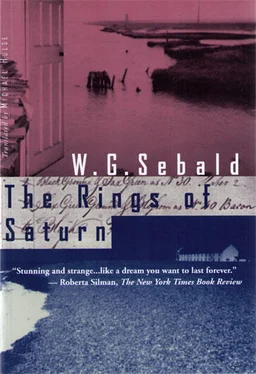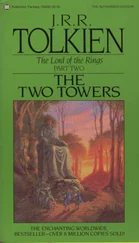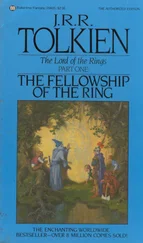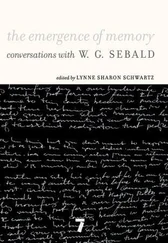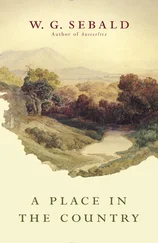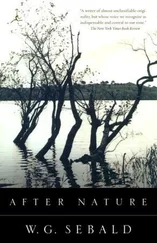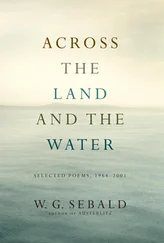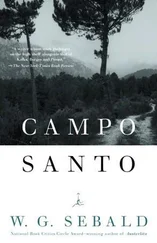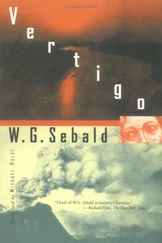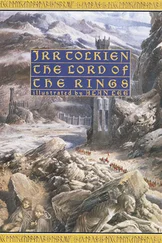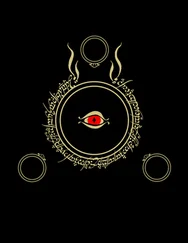
and then into a mighty oak, a sow, a sausage, a piece of excrement, a field of clover, a white flower, a mulberry tree, and a silk carpet. Much as in this continuous process of consuming and being consumed, nothing endures, in Thomas Browne's view. On every new thing there lies already the shadow of annihilation. For the history of every individual, of every social order, indeed of the whole world, does not describe an ever-widening, more and more wonderful arc, but rather follows a course which, once the meridian is reached, leads without fail down into the dark Knowledge of that descent into the dark. Knowledge of that descent into the dark, for Browne, is inseparable from his belief in the day of resurrection, when, as in a theatre, the last revolutions are ended and the actors appear once more on stage, to complete and make up the catastrophe of this great piece. As a doctor, who saw disease growing and raging in bodies, he understood mortality better than the flowering of life. To him it seems a miracle that we should last so much as a single day. There is no antidote, he writes, against the opium of time. The winter sun shows how soon the light fades from the ash, how soon night enfolds us. Hour upon hour is added to the sum. Time itself grows old. Pyramids, arches and obelisks are melting pillars of snow. Not even those who have found a place amidst the heavenly constellations have perpetuated their names: Nimrod is lost in Orion and Osiris in the Dog Star. Indeed, old families last not three oaks. To set one's name to a work gives no one a title to be remembered, for who knows how many of the best of men have gone without a trace? The iniquity of oblivion blindly scatters her poppyseed and when wretchedness falls upon us one summer's day like snow, all we wish is to be forgotten. These are the circles Browne's thoughts describe, most unremittingly perhaps in the Hydriotaphia or Urn Burial of 1658, a discourse on sepulchral urns found in a field near Walsingham in Norfolk. Drawing upon the most varied of historical and natural historical sources, he expatiates upon the rites we enact when one from our midst sets out on his last journey. Beginning with some examples of sepulture in elephants, cranes, the sepulchral cells of pismires and practice of bees; which civil society carrieth out their dead, and heath exequies, if not interments, he describes the funeral rites of numerous peoples before coming to the Christian religion, which buries the sinful body whole and thus extinguishes the fires once and for all. The almost universal practice of cremation in pre-Christian times should not lead one to conclude, as is often done, that the heathen were ignorant of life beyond death, to show which Browne observes that the funeral pyres were built of sweet fuel, cypress, fir, yew, and other trees perpetually verdant as silent expressions of their surviving hopes. Browne also remarks that, contrary to general belief, it is not difficult to burn a human body: a piece of an old boat burnt Pompey, and the King of Castile burnt large numbers of Saracens with next to no fuel, the fire being visible far and wide. Indeed, he adds, if the burthen of Isaac were sufficient for an holocaust, a man may carry his own pyre. Browne then turns to the strange vessels unearthed from the field near Walsingham. it is astounding, he says, how long these thin-walled clay urns remained intact a yard underground, while the sword and ploughshare passed above them and great buildings, palaces and cloud-high towers crumbled and collapsed. The cremated remains in the urns are examined closely: the ash, the loose teeth, some long roots of quitch, or dog's grass wreathed about the bones, and the coin intended for the Elysian ferryman. Browne records other objects known to have been placed with the dead, whether as ornament or utensil. His catalogue includes a variety of curiosities: the circumcision knives of Joshua, the ring which belonged to the mistress of Propertius, an ape of agate, a grasshopper, three-hundred golden bees, a blue opal, silver belt buckles and clasps, combs, iron pins, brass plates and brazen nippers to pull away hair, and a brass jew's-harp that last sounded on the crossing over the black water. The most marvellous item, however, from a Roman urn preserved by Cardinal Farnese, is a drinking glass, so bright it might have been newly blown. For Browne, things of this kind, unspoiled by the passage of time, are symbols of the indestructibility of the human soul assured by scripture, which the physician, firm though he may be in his Christian faith, perhaps secretly doubts. And since the heaviest stone that melancholy can throw at a man is to tell him he is at the end of his nature, Browne scrutinizes that which escaped annihilation for any sign of the mysterious capacity for transmigration he has so often observed in caterpillars and moths. That purple piece of silk he refers to, then, in the urn of Patroclus — what does it mean?
2. The diesel train — Morton Peto's palace — Visiting Somerleyton — The Cities of Germany in flames — The decline of Lowestoft — The former coastal resort — Frederick Farrar and the court of King James II
It was on a grey, overcast day in August 1992 that I travelled down to the coast in one of the old diesel trains, grimed with oil and soot up to the windows, which ran from Norwich to Lowestoft at that time. The few passengers there were sat in the half-light on the threadbare seats, all of them facing the engine and as far away from each other as they could be, and so silent, that not a word might have passed their lips in the whole of their lives. Most of the time the carriage, pitching about unsteadily on the track, was merely coasting along, since there is an almost unbroken gentle decline towards the sea; at intervals, though, when the gears engaged with a jolt that rocked the entire framework, the grinding of cog wheels could be heard for a while, till, with a more even pounding, the onward roll resumed, past the back gardens, allotments, rubbish dumps and factory yards to the east of the city and out into the marshes beyond. Through Brundall, Buckenham and Cantley, where, at the end of a straight roadway, a sugar-beet refinery with a belching smokestack sits in a green field like a steamer at a wharf, the line follows the River Yare, till at Reedham it crosses the water and, in a wide curve, enters the vast flatland that stretches southeast down to the sea. Save for the odd solitary cottage there is nothing to be seen but the grass and the rippling reeds, one or two sunken willows, and some ruined conical brick buildings, like relics of an extinct civilization. These are all that remains of the countless wind pumps and windmills whose white sails revolved over the marshes of
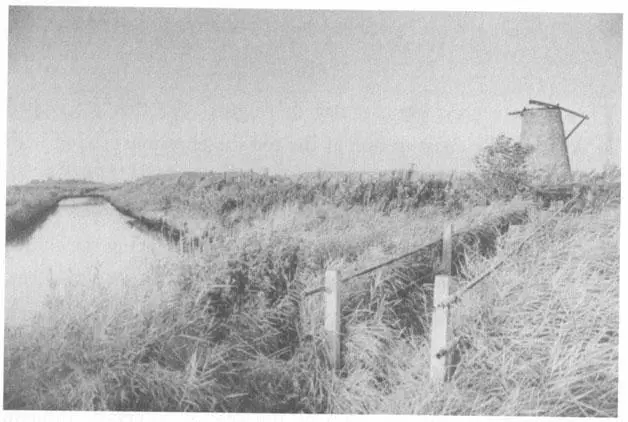
Halvergate and all along the coast until in the decades following the First World War, one after the other, they were all shut down. It's hard to imagine now, I was once told by someone who could remember the turning sails in his childhood, that the white flecks of the windmills lit up the landscape just as a tiny highlight brings life to a painted eye. And when those bright little points faded, the whole region, so to speak, faded with them. — After Reedham we stopped at Haddiscoe and Herringfleet, two scattered villages just visible in the distance; and at the next station, the halt for Somerleyton Hall, I got out. The train ground into motion again and disappeared round a gradual bend, leaving a trail of black smoke behind it. There was no station at the stop, only an open shelter. I walked down the deserted platform, to my left the seemingly endless expanses of the marshes and to my right, beyond a low brick wall, the shrubs and trees of the park. There was not a soul about, of whom one might have asked the way. At one time, I thought, as I slung my rucksack over my shoulder and crossed the track, things would have been quite different here. Almost everything a residence such as Somerleyton required for its proper upkeep and all that was necessary in order to sustain a social position never altogether secure would have been brought in on the railway from other parts of the country and would have arrived at this station in the goods van of the olive-green-liveried steam train — furnishings, equipment and impedimenta of every description, the new piano, curtains, and portières, the Italian tiles and fittings for the bathrooms, the boiler and pipes for the hothouses, supplies from the market gardens, cases of hock and Bordeaux, lawn mowers and great boxes of whalebone corsets and crinolines from London. And now there was nothing any more, nobody, no stationmaster in gleaming peaked cap, no servants, no coachman, no house guests, no shooting parties, neither gentlemen in indestructible tweeds nor ladies in stylish travelling clothes. It takes just one awful second, I often think, and an entire epoch passes. Nowadays Somerleyton Hall, like most important country houses, is open to a paying public in the summer months. But these people do not arrive by the diesel train; they drive in at the main gates in their own automobiles. If one nevertheless arrives at the railway halt, as I did, and has no desire to walk all the way round to the front, one has to climb the wall like some interloper and struggle through the thicket before reaching the park. It seemed to me like a curious object lesson from the history of evolution, which at times repeats its earlier conceits with a certain sense of irony, that when I emerged from the trees I beheld a miniature train puffing through the fields with a number of people sitting on it. They reminded me of dressed-up circus dogs or seals; and at the front of the train, a ticket satchel slung about him, sat the engine driver, conductor and controller of all the animals, the present Lord Somerleyton, Her Majesty The Queen's Master of the Horse.
Читать дальше
